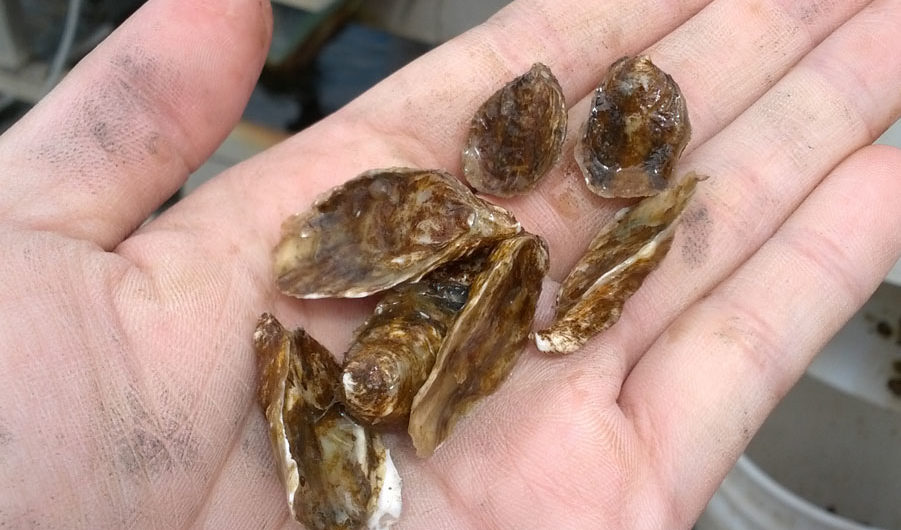Last week, we visited our friends at Taylor Shellfish Farms to see their operations and learn how shellfish is farmed from seed to supper. For over 100 years since the 1880s, the Taylor family has been growing shellfish. Great-grandfather J.Y. Waldrip originally tried his luck at gold mining in Alaska and ranching in Arizona, but it wasn’t until he dove into oyster farming that he truly found his calling. From those early homesteading adventures, Taylor Shellfish Farms has become one of the leading shellfish producers in the country.
In the pristine waters of Washington’s Puget Sound, Taylor Shellfish cultivates oysters, mussels, clams and geoduck. They run a state-of-the-art hatchery and nursery, which produces seed that is used by shellfish farmers all over the world. We stopped by for a tour of the hatchery and nursery to see for ourselves how oysters and shellfish are born in an aquaculture setting.
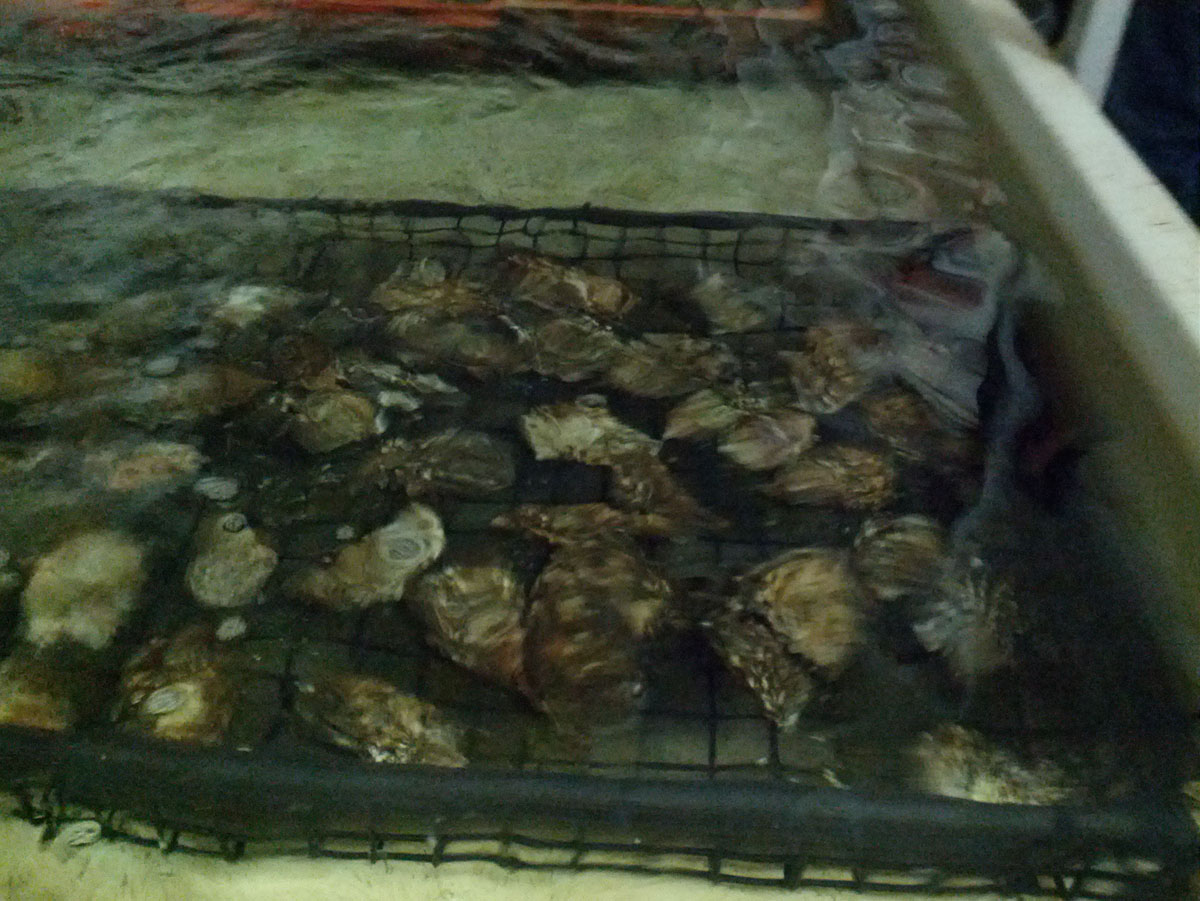
To start, you need male and female broodstock to serve as parents. Above you see broodstock for Pacific oysters, which will be carefully examined under a microscope to determine their sex and if they’re ready to begin spawning. To induce spawning, the temperature of the water is raised and the oyster’s meat will begin filling with eggs or sperm. (If you’ve ever eaten a spawny oyster, you’ll know that it’s not dangerous for you, but it’s also a rather unpleasant acidic taste.) Pacific oysters are broadcast spawners, which means they release gametes into the water for fertilization, instead of keeping them inside their shells.

The shellfish nursery is really a sophisticated biology lab, with precise monitoring equipment and an autoclave to sterilize flasks and other containers. Taylor Shellfish keeps detailed records of their genetic lines, and tries to breed oysters for disease resistance and fast growth. Some of their oysters are triploid oysters, meaning they have three sets of chromosomes instead of two. Having more than two sets of chromosomes is fairly common in plants, and in the case of triploids, it means the oysters are sterile and won’t spawn. Instead, they put their energy into faster growth and meat production, which means you can get plump triploid oysters even in the summer.
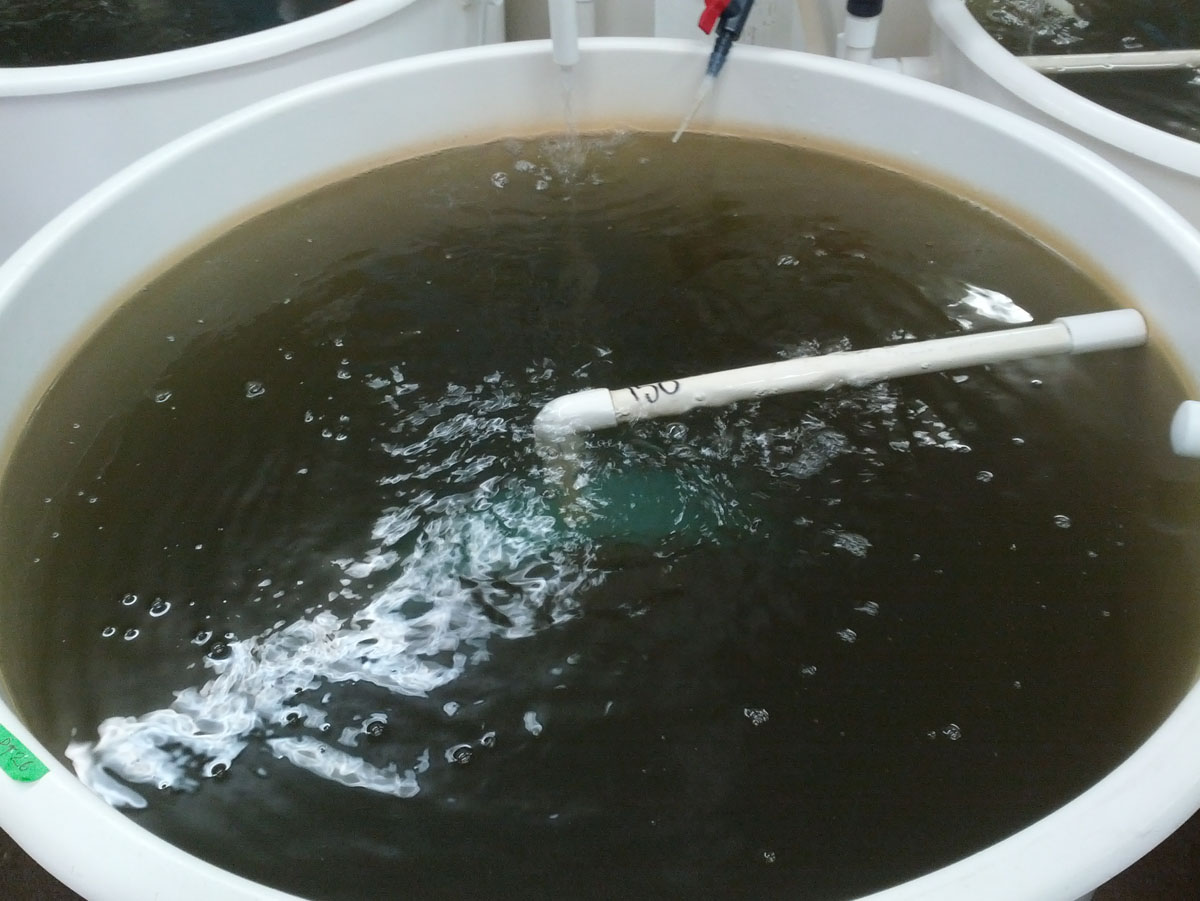
After the eggs are fertilized, the oyster larvae is put into large mixing tanks. At this stage, the larvae is free-swimming and develops an eye and a foot for locomotion. This is the only time in the oyster’s life when it can move.

It uses this phase to look for a place to settle and attach, where it will spend the rest of its life. In the wild, oysters generally like settling on other oysters, since it indicates that previous generations of oysters have done well in an area. For farmed oysters, old oyster shells are dried and ground up into fine grains called culch. Each microscopic oyster that settles on a piece of culch will grow into a single cocktail oyster, destined to be eaten on the half-shell. On the other hand, if larger pieces of culch are used to attract multiple oysters, the result will be shellstock oyster clusters. Generally, shellstock is used for shucked oyster meats packaged in jars, or the clusters can be used for Southern-style oyster roasts.

As the oyster larvae is growing, screens are used at the bottoms of the tanks to separate the oysters by size. Each of these screens is marked with the size of the screen mesh in micrometers (μm).
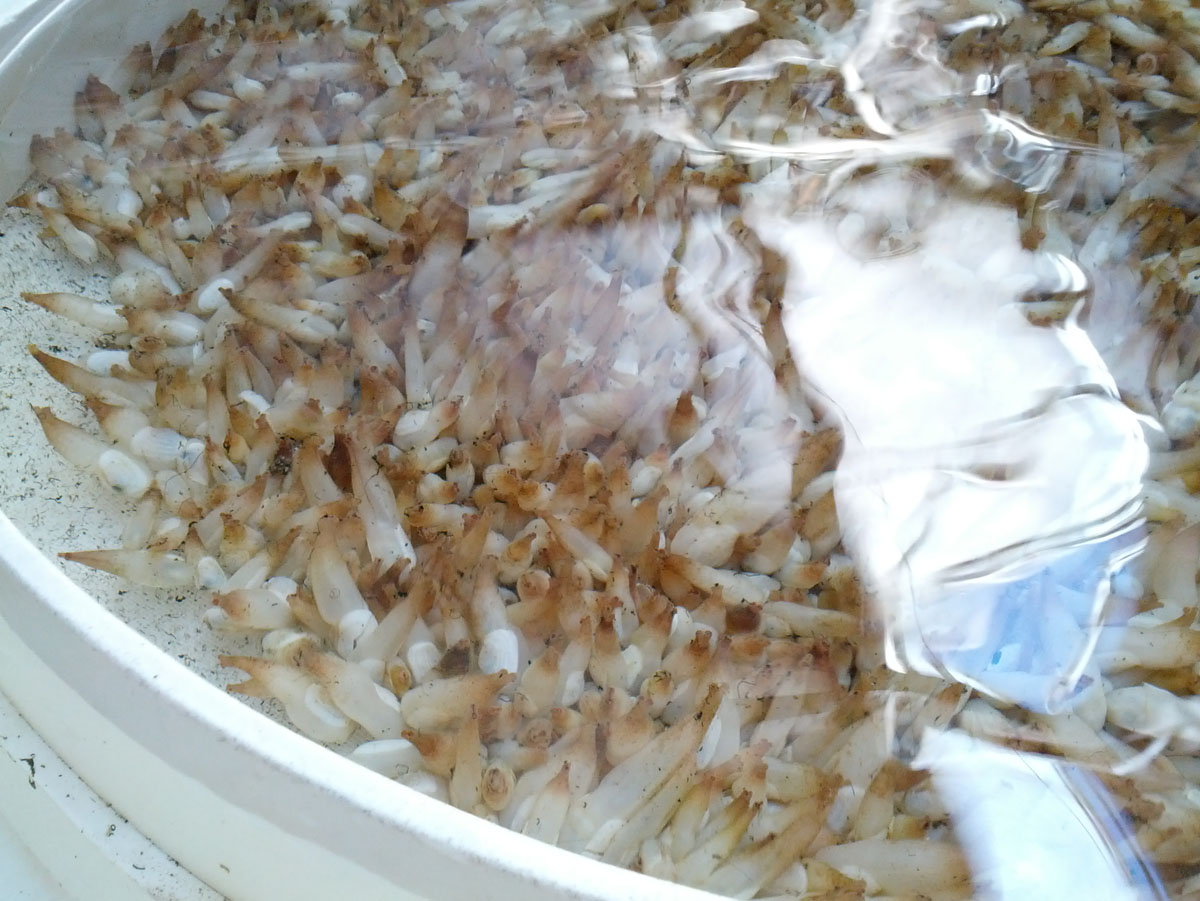
The hatchery produces not only oyster, mussel and clam seed, but also geoduck seed, which is a type of large burrowing clam. Here, you see a tray of “microgeoducks,” which will grow to market size (1.5-2 lbs) in about six years.
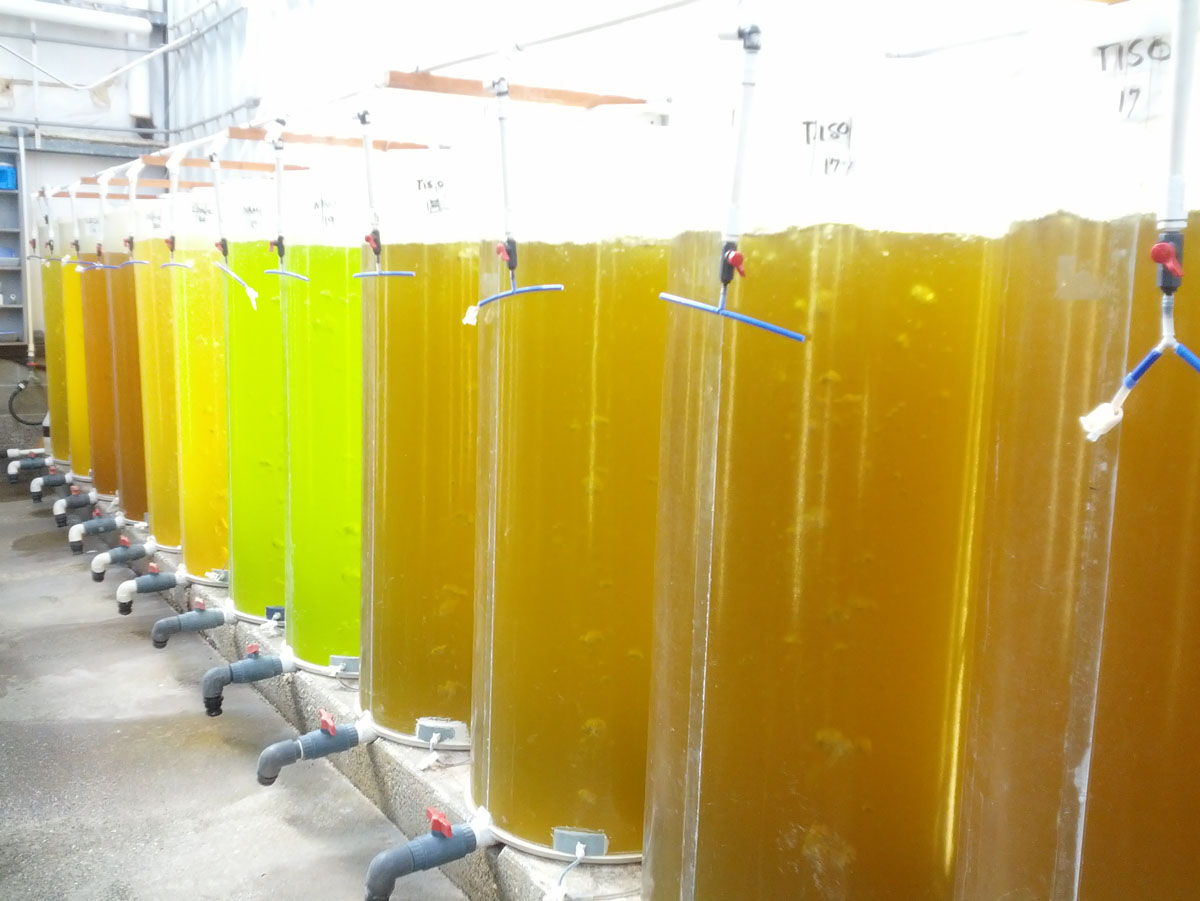
When you run a shellfish hatchery, you not only need to produce shellfish larvae but you also need something to feed them. Hence, the hatchery also grows many types of algae in different. Larvae will be fed algae that comes in pieces smaller than themselves; it’s difficult to eat something bigger than you!
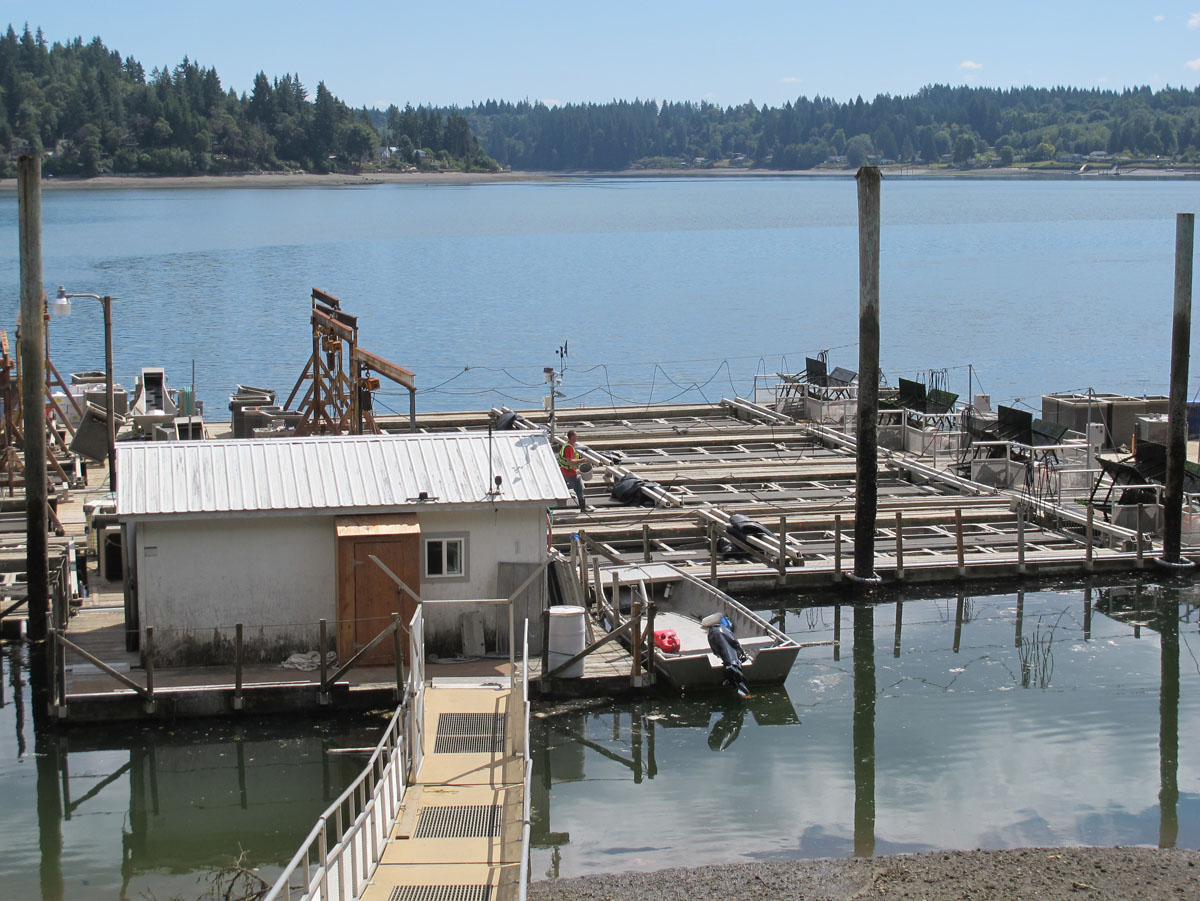
The next stop is the shellfish nursery, a half-way house where young shellfish can get acclimated to outside weather and water conditions while still enjoying significant protections. Taylor operates a FLUPSY, or floating upweller system, in which algae and nutrient-rich water is propelled or upwelled through compartments of juvenile shellfish held in a floating raft. It’s like living at an all-you-can-eat buffet, and the oysters grow exponentially in size, from tiny specks to the size of a quarter in just a few weeks, if conditions are ideal.
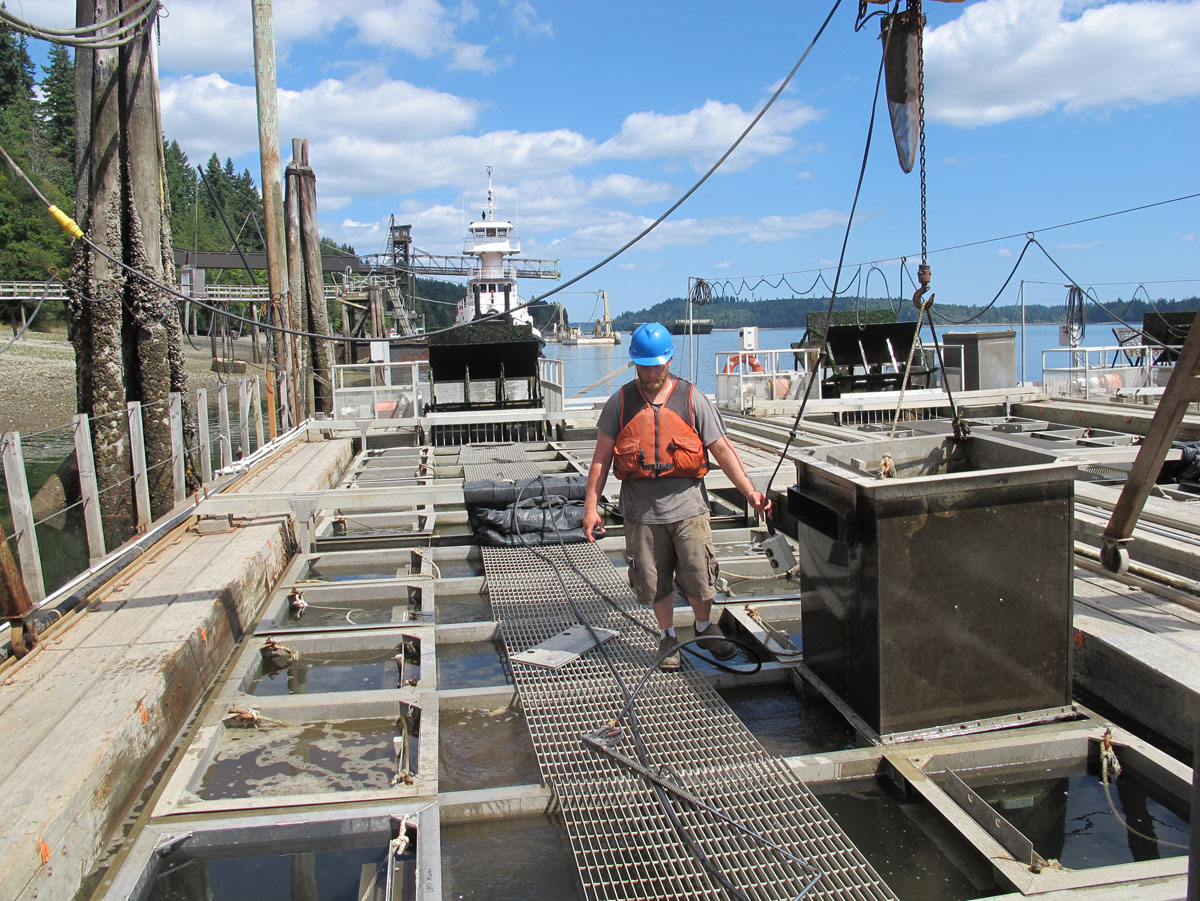
Each compartment is inspected regularly and the oysters inside are sorted by size. This ensures that larger oysters will not be competing for food with smaller oysters, and the final product will be more uniform in size.
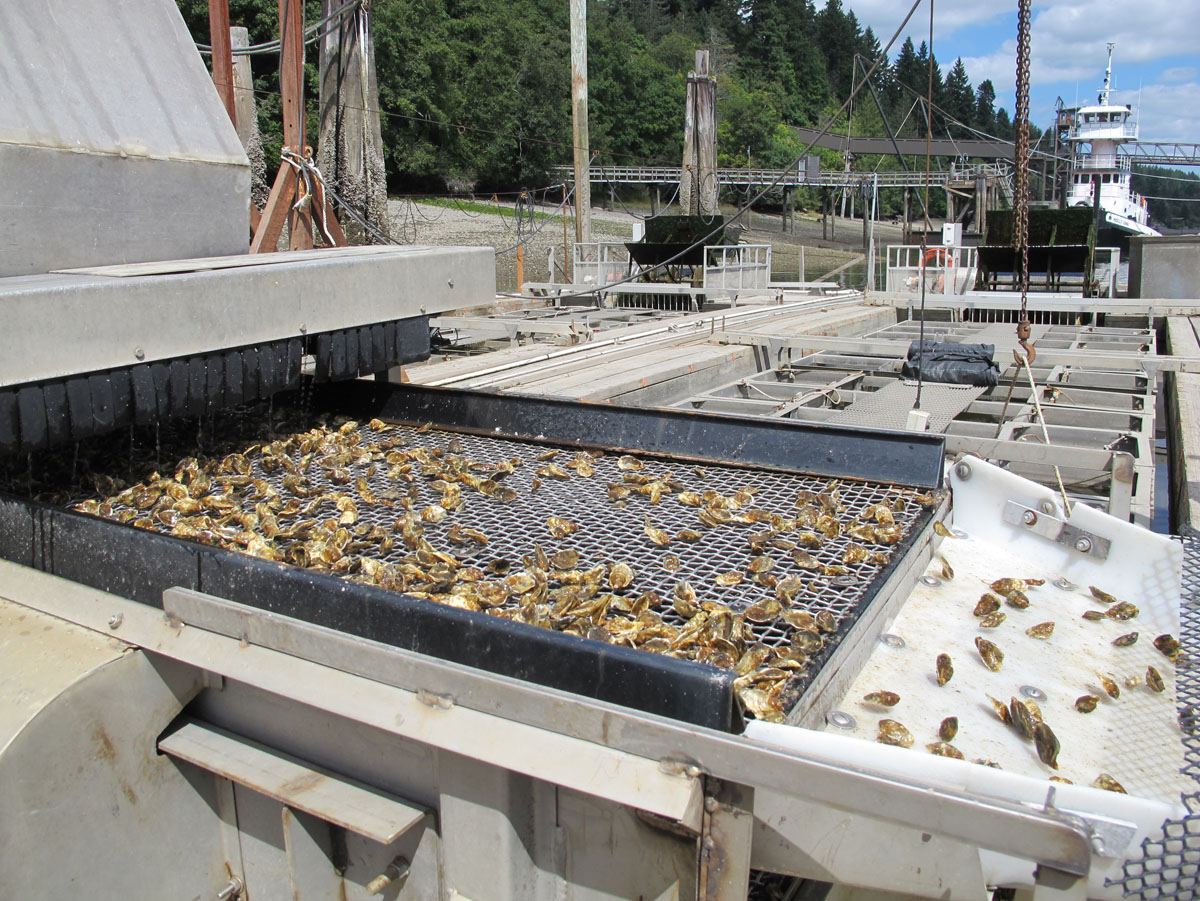
The sorting machine sorts and filters the oysters into groups depending on their shell size, and depending on their growth, they’ll be placed back into the FLUPSY, or they’ll be planted out in an estuary, large enough to fend for themselves in the real world.
Stay tuned to see how oyster grow-out works on the beach!
